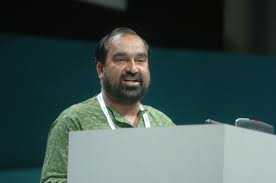Health Insights from Banerjee Duflo's Poor Economics
3 mins

This is Part 3 of our series of insights from Abhijit Banerjee and Esther Duflo’s Poor Economics – culled from Chapter 3 (Low-Hanging Fruit for Better (Global) Health?) Part 2 in this series was For the poor, what could possibly be more important than food?
- Countries in which a large fraction of the population is exposed to malaria are much poorer. On average, countries like Cote d’Ivoire or Zambia, where 50% or more of the population is exposed to malaria, have per capita incomes that are one-third of those in the countries where no one today gets malaria.
- According to studies in the US South and countries in Latin America, a child who grew up malaria-free earns 50% more per year, for his entire adult life, compared to a child who got the disease. Similar results found in India, Paraguay, and Sri Lanka.
- Introduction of piped water, better sanitation, and chlorination of water sources was responsible for nearly three-fourths of the decline in infant mortality between 1900 and 1946 and nearly half the overall reduction in mortality over the same period.
- It is estimated that by piping uncontaminated, chlorinated water to households, it is possible to reduce diarrhea by up to 95%. [Related Gram Vikas story below.]
- In 2002-2003, the World Bank conducted a World Absenteeism Survey in Bangladesh, Ecuador, India, Indonesia, Peru, and Uganda and found that the average absentee rate of health workers (doctors and nurses) was 35% (it was 43% in India).
- Udaipur-based NGO Seva Mandir saw a sevenfold increase in immunization rates (to 38%) after they started offering 2 pounds of dal for each immunization and a set of stainless steel plates for completing the course. (pilot initiated by Banerjee and Duflo)
- 77% of children received the first vaccine in the villages where the camps did not offer dal: People seem to be willing to start the immunization process, even without the incentives. The problem is to get them to complete it (only 38% did). This has a lot to do with the same reason that, year after year, we have trouble sticking to our New Year’s resolution to go to the gym regularly, despite knowing that it may save us from a heart attack down the line. Research in psychology show that we think about the present very differently from the way we think about the future (a notion referred to as “time inconsistency”).
The experience of Orissa-based NGO Gram Vikas shows that it is possible to provide piped water and sanitation to poor villages at a reasonable cost. He explained to us that in Orissa, water and sanitation are social issues. Madiath (Gram Vikas’s CEO) insists that every single household in the villages where Gram Vikas operates should be connected to the same water mains: Water is piped to each house, which contains a toilet, a tap, and a bathing room, all connected to the same system. For the high-caste households, this means sharing water with low-caste households which, for many in Orissa, was unacceptable when first proposed. It takes the NGO a while to get the agreement of the whole village and some villages eventually refuse, but it has always stuck to the principle that it would not start its work in a village until everyone there agreed to participate. When agreement is finally reached, it is often the first time that some of the upper-caste households participate in a project that involves the rest of the community.
Once a village agrees to work with Gram Vikas, the building work starts and continues for one to two years. Only after every single house has received its tap and toilet is the system turned on. In the meantime, Gram Vikas collects data every month on who has gone to the health center to get treated for malaria or diarrhea. We can thus directly observe what happens in a village as soon as the water starts flowing. The effects are remarkable: Almost overnight, and for years into the future, the number of severe diarrhea cases falls by one-third. The monthly cost of the system for each household, including maintenance, is 190 Rupees, or $4 per household (in current USD), only 20% of what is conventionally assumed to be the cost of such a system.